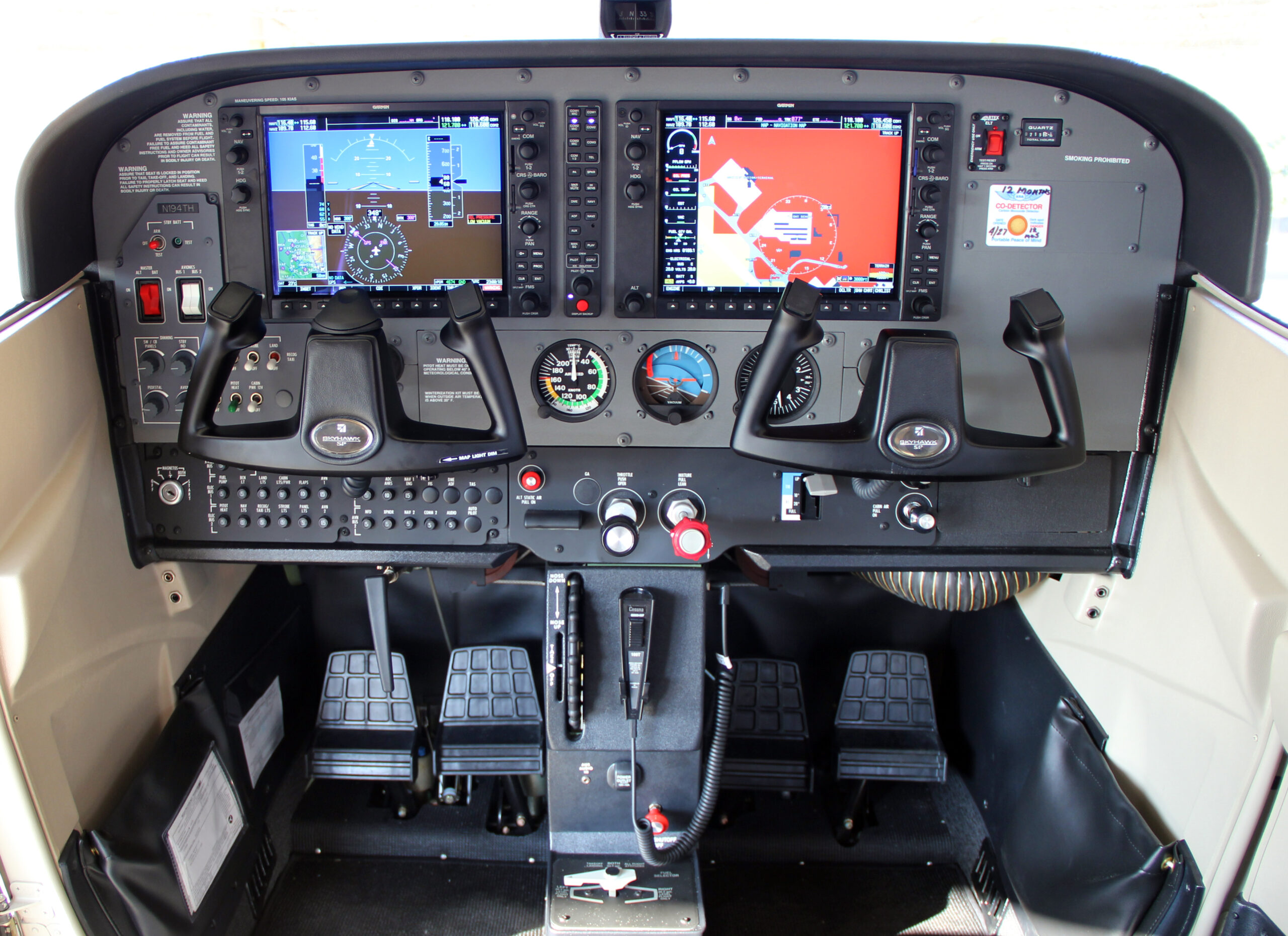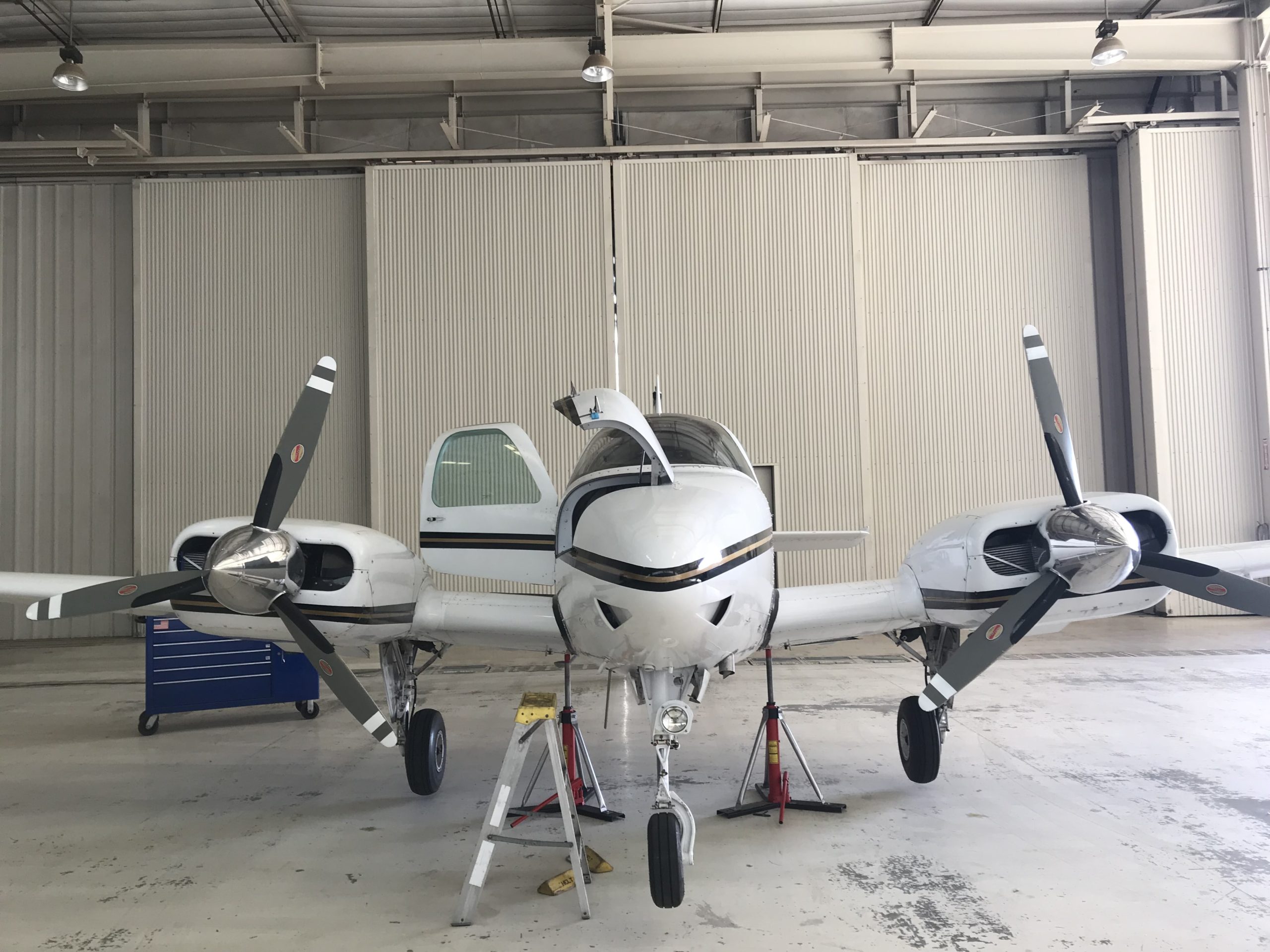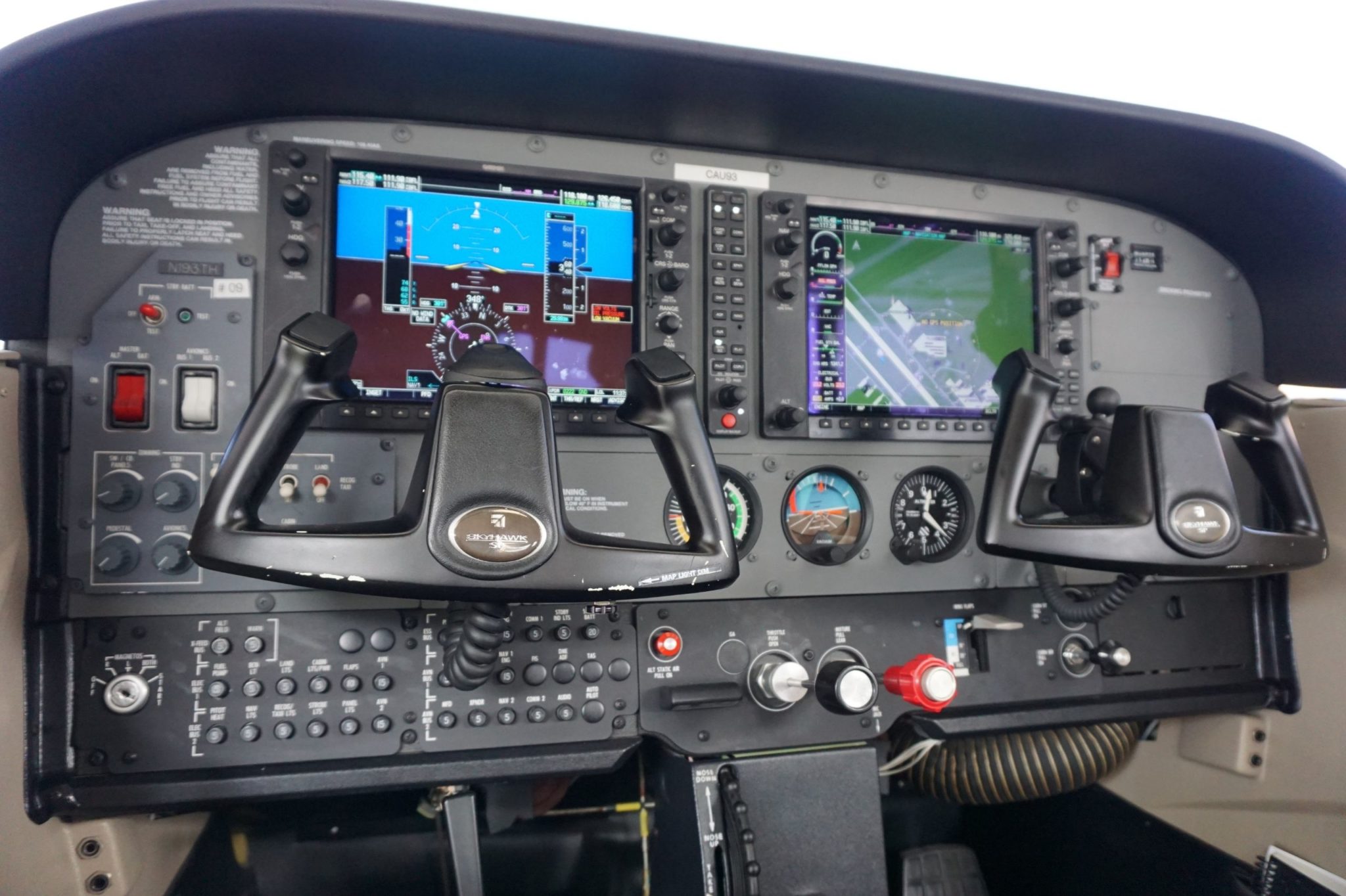Pilots have a lot of different types of equipment they have to learn about – especially when it comes to the instruments on their dash. Knowing what everything is and how to utilize it properly allows them to safely handle their aircraft. To prepare you for a future in aviation, there are many things you are going to learn along the way. How to read an altimeter is one of them.
What is an Altimeter?
In its most simplistic form, an altimeter is a device used to determine an airplane’s altitude.
Different types of altimeters exist, most commonly a radar altimeter, a GPS altimeter, and a pressure altimeter. Each can roughly provide the same answer, the difference is in how it is obtained. For instance, a radar altimeter uses electromagnetic waves to measure how long it takes a signal to travel from the ground below to the altimeter unit in the aircraft. As its name suggests, a GPS altimeter uses GPS coordinates in a way to provide you with your altitude. For a pressure altimeter, the altitude measurement is done in much the same way a barometer does, by measuring air pressure. Air pressure decreases as your altitude decreases. This is based on the fact that for every 10,000 feet of altitude, you will lose one millibar of air pressure.
Knowing how high you are when flying an aircraft is, after all, very important. This means understanding how to read an altimeter as its output will change when the aircraft climbs or descends.
It is essential to remember that there are different types of altitudes that may impact the accuracy of an altimeter, such as Above Ground Level (AGL) and Mean Sea Level (MSL).
Gaining an understanding of the bigger picture of this vertical distance makes it easier for pilots to understand the readings they are getting from their dash altimeter.
How to Read an Altimeter
Altimeters look very much like a clock with three different hands. However, instead of telling time these hands state different increments of altitude. In order to properly read an altimeter, you must understand what each hand represents.
Some altimeters – especially GPS altimeters – will provide simple, easy-to-read digital displays of altitude.
Weather and Altimeters
Pilots learn that using pressure altimeters means understanding the weather conditions. The reason for this is that temperature change can impact the reading – and make it erroneous. Why? Because as the temperatures rise and the air warms up, pressure levels tend to become expanded, resulting in a lower altitude reading.
Pilots need to be cautious on very cold days. This is when the pressure levels are compressed and the altimeter reading will need to be adjusted. The reading on the altimeter is likely to show that you are traveling at a higher altitude than you are. This can be very dangerous. To make the adjustment and get a more accurate altitude reading, the International Civil Aviation Organization (ICAO) provides a table that pilots can use to adjust their altitude. It will let you know how far an aircraft’s altitude may be below the actual reading.
The greater the understanding you have of how altimeters work, the greater chance you have of successfully using one.
Can an Altimeter Fail?
Unfortunately, just like any type of equipment, an altimeter can malfunction or fail entirely regardless of how reliable they are. Pilots rely heavily on this unit for their altitude but there should always be a backup just in case. Knowing what to do in the event that this happens can keep the aircraft safe and sound.
What do you do if your altimeter fails?
Checking the altimeter is on your pre-flight checklist. If it does not seem to be functioning properly, your airplane is grounded until the issue is fixed. No exceptions. You never want to try to fly without a working altimeter. If you are mid-flight and the failure occurs? The goal is to land as soon as possible. Here is how you can do that:
Focus on flying the plane
Don’t allow your broken altimeter to take over your attention or cause you to panic. Rather, focus on flying. This can be much easier to do when you have visual flight conditions. If you don’t currently have this, get to it as soon as you can. Reach out to air traffic control to get there – they can help.
Check your barometric pressure
If you are using a pressure altimeter, you will want to check its barometric pressure setting and make sure that it is properly tuned. Having a barometric pressure setting that is different from what it should be can throw off your altitude reading.
Pulling the alternate static air
Sometimes the outside static air port can get blocked for one reason or another. Pulling this value will fix any blockage issues.
Work with ATC
Air traffic control can guide you as a last resort. You can continue to reach out to them for readings to get an idea of your altitude. Though, this is not going to always be very accurate so keep that in mind.
Consider always having a backup altimeter. Keeping one available will reduce the chance of finding yourself in this situation. Anything in your flight bag that can help you determine altitude could prove to be very beneficial.
Prepare For Your Future in Aviation at CAU
At California Aeronautical University, students become proficient in the areas of understanding federal regulations, weather, aerodynamics, and various aviation topics. That includes learning how to read an altimeter properly and how to be resourceful should this important flight tool fail.
Working in the field of aviation means being ready with the skills and the resources necessary for a safe flight, whether you are a pilot, an aviation maintenance technician, or something else. And CAU can help make it happen.
Ready to get started? Request information today!
Ready to soar in your aviation career?
Mr. Matthew A. Johnston has over 23 years of experience serving various roles in education and is currently serving as the President of California Aeronautical University. He maintains memberships and is a supporting participant with several aviation promoting and advocacy associations including University Aviation Association (UAA), Regional Airline Association (RAA), AOPA, NBAA, and EAA with the Young Eagles program. He is proud of his collaboration with airlines, aviation businesses and individual aviation professionals who are working with him to develop California Aeronautical University as a leader in educating aviation professionals.






